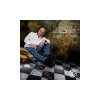IndianEars
Well-Known Member
mbhangui, the wav vs flac debate will go on.
Some speculate the SQ Difference is due to the extra Horse power required for Real Time Conversion by the computer during playback. Ofcourse it can be argued that the incremental computing is miniscule.... What ever the reason, I believe wav sounds better to my ears and on my setup.
We all have our beliefs...
Some speculate the SQ Difference is due to the extra Horse power required for Real Time Conversion by the computer during playback. Ofcourse it can be argued that the incremental computing is miniscule.... What ever the reason, I believe wav sounds better to my ears and on my setup.
We all have our beliefs...



